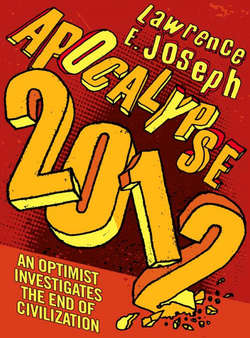Читать книгу Apocalypse 2012: An optimist investigates the end of civilization - Lawrence Joseph E. - Страница 6
ATOM SMASHING
ОглавлениеRunning a Vulcan furnace requires a megawatt of direct electrical power, enough to run about 25 contemporary, standard, three-bedroom homes, or 200 rent-controlled apartments in Park Slope, Brooklyn, where Victor Simuoli and I planned to construct our atom smasher for the annual Junior High School 51 science fair. The Atomic Energy Commission had kindly sent us the plans for a linear accelerator, a device that propels subatomic particles from either end toward the middle and then smashes them into each other head-on at terrific speeds. Seeing how incredibly complicated the blueprints were, and how running the atom smasher would probably have shorted out the whole neighborhood, Victor and I settled, as I recall, for making a crystal radio receiver out of a cigar box.
We probably wouldn’t have given up so easily if we knew there was a possibility that our atom smasher could potentially create a tiny black hole that would eventually destroy the world. Not, mind you, that we were pre-Columbine or anything, just that, as two nerdy adolescents, the temptation of unleashing Star Trek-scale forces would have been hard to resist.
Though our machine would have been way too small to punch a black hole into space-time, the same cannot be said for the large hadron collider (LHC), a 27-kilometer circle on the border between France and Switzerland. When it begins operation in 2007, it will pack the colossal wallop of 14 trillion electron volts. A trillion electron volts, it turns out, is about the same amount of energy used by a mosquito to fly. The remarkable thing about the LHC is that it will concentrate its energy beam into a space one-trillionth the size of a mosquito, smashing protons into 10,000 pieces or more.
According to physicist Michio Kaku, the LHC’s incredible focusing power will create “an entire zoo of subatomic particles not seen since the Big Bang,” including mini black holes. Mini black holes? Intellectually scintillating though such a smash-up may be, questions must be raised about the calamity potential for some of these experiments. Don’t black holes, mini and otherwise, have a tendency to suck up everything around them into oblivion?
Martin Rees, a colleague of Hawking’s at the University of Cambridge, is a physicist who also has the distinction of serving as the United Kingdom’s Royal Astronomer. Rees warns that the shower of quarks resulting from proton-antiproton collisions could create mini black holes, called strangelets, which have the capability of contagiously converting everything they encounter into a new, hyperdense form of matter. Atoms are made mostly of empty space, space that would be squeezed out by the strangelet, compressing the Earth into an inert sphere about the size of a Home Depot.
An inglorious ending, that.
